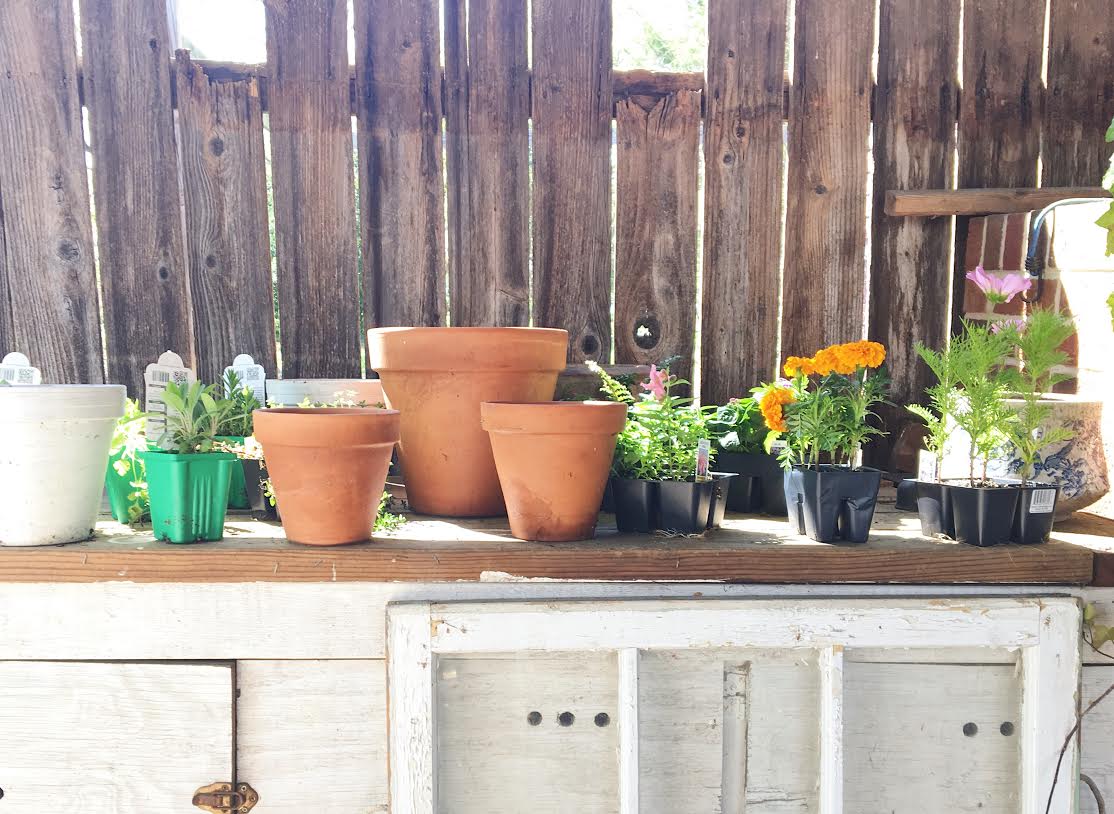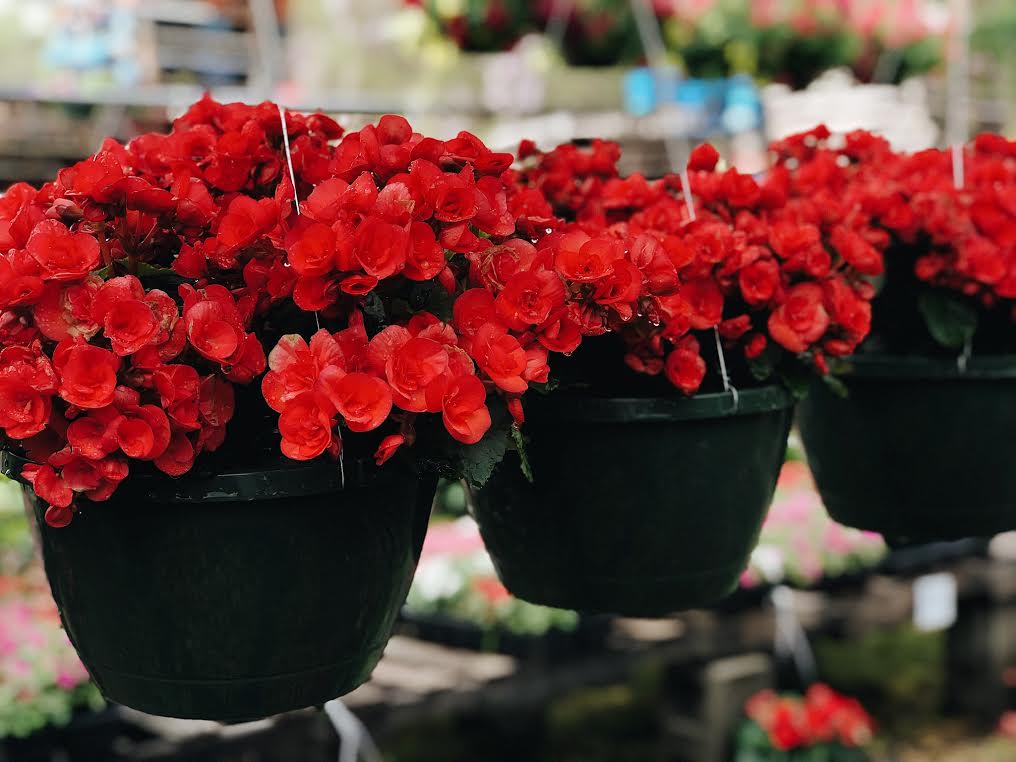
B L O G
The Best Guacamole You've Ever Tasted
Grab a bag of salty tortilla chips, and let’s get to making The Best Guacamole You’ve Ever Tasted…
If you’ve ever tried Guacamole from the store or restaurant, and didn’t like it… you might need a “do-over”. Not only can Guacamole be so flavorful, but it’s also a very easy dip to make for any party, taco night, or just a good old fashioned self care night in. Grab a bag of salty tortilla chips, and let’s get to making The Best Guacamole You’ve Ever Tasted…
First, start by heading over to Garden Valley and picking out your ripe avocados, juicy tomatoes, tangy limes, and flavorful red onions. We chose the better boy tomato, but you can easily substitute that for another tomato that you would prefer. If you ever need help in knowing if your avocado is ripe, any of our knowledgeable employees would be glad to assist you.
Also, did you know that avocados are REALLY good for you? Here’s some of the health benefits:
+ High in monounsaturated fats, which help prevent heart disease AND lower blood pressure
+ Great source of fiber, which is wonderful for gut health
+ High in antioxidants and anti-inflammatory compounds
+ Packed with nutrients that support satiety in diet, helping support a healthy weight/diet
+ Great source of folate, a very important vitamin needed in fetal development
Okay now that you’re home, let’s get to the good stuff…
Start by slicing your avocados and dumping them into the bowl. Add in your freshly squeezed lime juice, garlic, salt, red onions, and tomatoes. Now mash, chop, and stir ingredients until blended to the texture you desire. Some people like no lumps, while others like a little bit of texture when dipping their chip. It’s all in the preference you choose.
There’s no science to this recipe, which is what makes it sooo easy. Just dump, smash, stir, and dip. We think you’ll be pleasantly surprised at how fresh and amazing this guacamole tastes. We also think you’ll be making this for every party from here on out. Trust us, it’s always the first thing to go at the appetizer table, and your friends and family will be raving about this recipe for a long time. Don’t worry though… it will be our little secret.
The Best Guacamole you’ve ever tasted
SERVINGS: 4 PEOPLE
INGREDIENTS
3 Avacodos
2 Freshly Squeezed Limes
1/4 C Finely Diced Red Onion
1/3 C Finely Diced Tomato
1 1/2 t Garlic Powder
Salt to taste
DIRECTIONS
1. Slice avocados and scoop the meat of them into mixing bowl.
2. Squeeze the juice of your two limes into bowl with your avocados.
3. Finely chop 1/4 C tomato and 1/3 C red onion while the avocado is absorbing the lime juices.
4. Dump onion, tomato, salt, and garlic powder into the bowl.
5. Smash your avocados and stir until your have reached desired texture and consistency in your guacamole.
6. Grab a chip (or two) and taste test.
S I D E N O T E
We have found that letting the avocado absorb the lime juice prior to smashing it does help to soften it. This helps if your avocado was not quite ripe enough.
How to Care for Million Bells
Million bells (Calibrachoa) are so amazing because they form excellent colorful ornaments for gardens, wonderful bedding plants and gorgeous hanging baskets. And because their long stems spill and cascade so beautifully over their containers, they make great additions in any pot, mixed container, or window box.
How to Care for Million Bells
Million bells (Calibrachoa) are so amazing because they form excellent colorful ornaments for gardens, wonderful bedding plants and gorgeous hanging baskets. And because their long stems spill and cascade so beautifully over their containers, they make great additions in any pot, mixed container, or window box.
What’s the difference between a Million Bell and a Petunia you ask? Well, the Million Bell’s blooms are smaller than the Petunia’s, and they do not require as much fertilizer to keep them vibrant and thriving all spring and summer long. They also LOVE those North Carolina hot and humid summers, so we highly recommend these if you’re wanting a flowering plant.
Care Requirements For MILLION BELLS
LIGHT - Full Sun – Million Bells are considered to be full sun plants. They can do best when placed in direct sun for at minimum of 6 hours daily. If plants do not get enough light they may look tired and blooming will decrease and the plants will begin to stretch. This is an indication that the plant needs to be moved in a location where it gets at least 4-6 hours of direct and filtered sun in a day.
FERTILIZER - Regular Liquid Fertilizer – Lighting is important to a bright, eye-popping, color display Calibrachoa provides. But fertilizer is also very important. Heavy blooming the entire summer means heavy demands on plant nutrition. To keep plants strong, fertilize every other week with a liquid fertilizer. Fertilization is the key for blooming your calibrachoa throughout the season well.
SOIL – Well Draining - Most in-ground gardening soils do not have the best drainage. This is why Million Bells are normally found growing in containers. Plant them in a well draining container with good quality potting soil and you will be just fine!
WATER – Soak but Let Soil Dry - Million Bells needs generous amount of water for “soaking” the roots. However, the soil needs to be given time for drying out until the next watering cycle. When watering, water the soil thoroughly and allow the top 1-2 inches of soil to dry before watering again. Soggy soil lead to plants rotting.
PRUNING - Regular Trimming - When plants start looking tired or non-vibrant, it signals for trimming. Trim your Million Bell from the bottom up (1-4 inches) in mid-summer time. Trimming stimulates root growth, which allow more blooms to produce and will pick up in about a week or two. You do not need to dead head Million Bells either, as they are a self-cleaning plant. Blooms will automatically drop and be replaced with another gorgeously vibrant bloom.
FROM GARDEN VALLEY:
Hopefully these tips will help keep your Million Bells look stunning all season long! And we hope that they also help keep you planting better, eating better, and living better.
We would love to see how you place your Million Bells at your home! Don’t forget to tag us on Facebook, Instagram, and TikTok! We can’t wait to see! @gardenvalleyfarmersmarket
3 Ways to Protect Your Plants from Frost
The beautiful season of spring is finally here for us in central North Carolina, but unfortunately, we do have an occasional frost that could cause devastation to our vegetable plants and delicate flowers. But don’t worry, Garden Valley has got you covered with 3 ways you can protect your plants from a cold frost:
The beautiful season of spring is finally here for us in central North Carolina, but unfortunately, we do have an occasional frost that could cause devastation to our vegetable plants and delicate flowers. But don’t worry, Garden Valley has got you covered with 3 ways you can protect your plants from a cold frost:
A little information first- A frost would be considered to happen between 28 and 32 degrees F. And as a general rule, most plants (tomatoes, annual flowers, watermelon, etc) will need to be covered unless they are cold tolerant, especially if they are starting to bloom.
3 ways to protect plants from frost
1. Cover with a breathable fabric.
Covering your plants with a breathable cloth like material will allow moisture to escape and not suffocate your plant like a plastic material would. You could use blankets, bed sheets, and even pillow cases for those small plants.
HOW? Just place a tall stake or stick throughout the area and cover. This will help keep the plant in tact and allows for room between the material and the plant. After all, we don’t want to crush our plants in the process, do we?
2. Cover with mulch/straw/leaves
Covering the soil around your plants with a mulch-like substance will help to regulate the swinging temperatures of the soil and keep prevent “shocking” your root system from the bitter cold. At least 3” of mulch, straw, or leaves should suffice.
3. Cover seedlings/small plants with a glass or cloche
Covering your smaller plants with a glass like material will help to keep the heat in but also allow for the sun to shine through.
HOW? Just cover your plant right before the sun goes down, and then uncover them when the temperature finally raises above freezing.
FROM GARDEN VALLEY:
Hopefully these tips will help you and your plants make it through the next few weeks before the temperatures stay above freezing. And we hope that they also help keep you planting better, eating better, and living better.
We would love to see how you keep your plants safe during the frost! Don’t forget to tag us on Facebook, Instagram, and TikTok! We can’t wait to see! @gardenvalleyfarmersmarket
8 Most Common Gardening Mistakes
Gardening can be such an exciting experience. With Pinterest and our neighbors' beautiful homes as inspiration, we can plan our future spring garden in hopes that we achieve those huge blossoms and healthy vegetables. And all of those dreams are awesome... except when those plants don't actually grow, and we're left feeling disappointed and discouraged. Good thing we, at Garden Valley Market, are here to help you prepare this spring! Here are 8 of the most common gardening mistakes we hear about, and how you can avoid them.
Gardening can be such an exciting experience. With Pinterest and our neighbors' beautiful homes as inspiration, we can plan our future spring garden in hopes that we achieve those huge blossoms and healthy vegetables. And all of those dreams are awesome... except when those plants don't actually grow, and we're left feeling disappointed and discouraged. Good thing we, at Garden Valley Market, are here to help you prepare this spring! Here are 8 of the most common gardening mistakes we hear about, and how you can avoid them.
1. Bad Soil
Different plants need different types of soils. How do you know what soil your specific plant needs? Often times googling it is great, but you can also ask your local garden center when purchasing your plant. Did you know you can test your ground's soil compost to see what type of soil you have? Testing your soil will help guide you when choosing which plants will grow in your yard.
Another important thing to remember when gardening is that unhealthy soil will only produce an unhealthy plant. Making sure that your plant get's the best nutrients from its root is essential to your plant's life. That’s why we love to carry and use Daddy Pete’s Plant Potting Mix at our stores here in Burlington, North Carolina. This soil is organic and makes a great all purpose soil for pretty much anything- pots, beds, shrubs, etc. The soil protects your plants from the elements, and also prevents those pesky weeds from growing. The soil plays a huge role in your plant’s life, so remember to stop by Garden Valley Market to get a good quality soil that will keep your plants happy and healthy all season long!
2. Wrong Zone
It's very important to check your plant for what zone it is able to grow. This information can usually be found on the tag of the plant. For example, a tropical hibiscus would probably not last very long in a cold climate like Minnesota. Or the beautiful snapdragon, which loves the mid 70s weather, but a hot summer in a hot state might cause them to burn out. If you keep in mind which climate/zone you live in, and make your choices based off of that information, it might save you some heart ache and frustration in the long run.
3. Not Fertilizing
Technically, you don't HAVE to fertilize. However, if you're wanting a hardy harvest or an abundance of healthy flower petals, it is definitely recommended. Fertilizing once every four weeks is usually a good start, but be careful not to over-fertilize, as this can stress the plant out by growing too quickly. Also, there are great natural ways, found at this blog, to fertilize your garden if you're not wanting to use chemical-filled fertilizers. There’s an option for everyone!
4 .Watering Incorrectly
This is probably the most common mistake and complaint that we receive from customers here at Garden Valley Market. It's important to know what your plant's watering needs are if you're wanting to keep it healthy and happy.
Lack of watering is simple to understand.
A great sign of this is when your plant has limp leaves that have not turned yellow, but look dull and lifeless. (For example, when you come back from a week long vacation and your petunia hanging basket is crispy… that's probably due to a lack of watering.)
Overwatering a plant can sometimes be difficult to notice, however, until it’s too late.
Usually overwatering will produce yellowing, and LIMP leaves.
Tips To Prevent Overwatering:
+ Make sure there is good drainage in your soil and that
there is a hole in the bottom of the pot that water can
drain from to prevent root rotting
+ Terra cotta pots are not only cute, but they allow
moisture to evaporate more efficiently, as opposed to a plastic pot
+ With potted plants, stick your index finger in
the soil to the first knuckle. If it is moist, hold off on
watering and check back again later.
+ When grouping plants together, make sure they
have the same watering needs
Make Watering Easier By:
+ Choose a hose with plenty of length to spare
+ Consider a soaker hose for bigger gardens
+ Have someone come to your house to water your plants when away
+ Avoid spraying the top of the plants to prevent burning of the leaves
5. Timing
Did you know that planting too early or too late can set you up for failure? For example, depending on what zone you are in, you might want to plant your tomatoes in late winter, or early spring, to allow for PLENTY of time for your plant to grow and mature. Also, sometimes a plant needs more time to establish their root before growing. For example, a peony does best when planted in the Fall and will generally grow better than those planted in the Spring.
6. Plant Overload
Sometimes we can buy too many plants, and not have enough time to maintain them, or even plant them for that matter. When shopping for a plant, remember to reign in on the excitement, and think of what your garden needs, and start from there. Making lists are a great way to help keep up with this. You can always make another trip, especially to Garden Valley Market where you’re always welcome!
Also, remember that when planting, space it out with the mature plant in mind. Give your plants enough space to grow, because a crowded plant can sometimes produce more pests and diseases. Plants also tend to compete for water and nutrients when planted too closely together. Look at the recommended spacing instructions on the tag of the plant, and that will allow you to gauge how much space is needed.
7. Bad Placement
When deciding on what plants you are wanting to purchase, remember to look at the tag for sunlight recommendations. (For example, you wouldn't want to buy a petunia hanging basket, which requires full direct sun, for your covered porch that receives no direct sun.)
But what does "full sun" or "part shade" even mean?
Here is a general explanation of the terms:
+ Full Sun: 6+ hours of direct sun
+ Part Sun: 4-6 hours of direct sun
+ Part Shade: 4-6 hours of cooler sun (usually morning sun as it's not as hot)
+ Shade: Less that 4 hours of sun
8. Being Too Hard On Yourself
You don't have to be perfect to garden. Repeat it to yourself. You don't have to be perfect. The true beauty of gardening is not getting it "right" the first time. It's the growth that takes place in your soul, and in your mind. The knowledge and wisdom that you receive from the plants is sometimes better than succeeding. And remembering that when it doesn't go right, or perfect, we can always try again, and that is what's life-giving about gardening. Because each time you try, you get better, you learn, and then you get to look back and see how much growth has taken place in your garden, and in you.




































